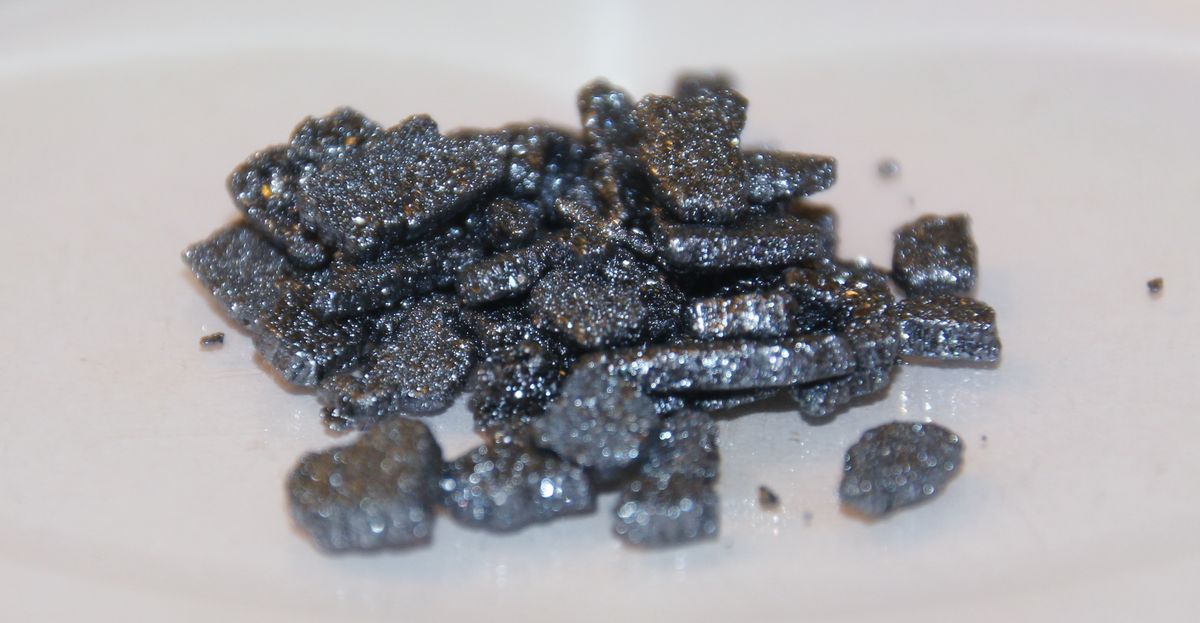
Einsteinium(III) iodide might sound like something out of a sci-fi movie, but it's a real chemical compound with some pretty cool properties. Named after the legendary physicist Albert Einstein, this compound combines einsteinium, a synthetic element, with iodine. Einsteinium itself is a heavy, radioactive element that was first discovered in the debris of a hydrogen bomb explosion. When it bonds with iodine to form Einsteinium(III) iodide, it creates a compound that scientists study to understand more about the behavior of heavy elements. Curious about what makes this compound so special? Here are 25 intriguing facts that will shed light on the mysterious world of Einsteinium(III) iodide.
Key Takeaways:
- Einsteinium(III) iodide is a rare, radioactive compound named after Albert Einstein. It glows in the dark and is studied to understand the behavior of heavy elements and their radioactive decay.
- Due to its high radioactivity, einsteinium(III) iodide is only produced in small quantities and is primarily used for scientific research in nuclear chemistry and physics. Its complex crystal structure and properties help scientists gain insights into heavy element behavior.
What is Einsteinium(III) Iodide?
Einsteinium(III) iodide is a chemical compound that combines einsteinium, a synthetic element, with iodine. This compound is fascinating due to its unique properties and the challenges associated with its study. Let's dive into some intriguing facts about this compound.
-
Einsteinium(III) iodide has the chemical formula EsI3. This indicates it contains one einsteinium atom and three iodine atoms.
-
Einsteinium is a synthetic element. It doesn't occur naturally and must be produced in a laboratory setting, usually in nuclear reactors.
-
Einsteinium was discovered in 1952. It was identified in the debris of the first hydrogen bomb explosion.
Properties of Einsteinium(III) Iodide
Understanding the properties of this compound helps scientists learn more about the behavior of heavy elements.
-
Einsteinium(III) iodide is a solid at room temperature. Like many other iodides, it forms a crystalline structure.
-
It has a high melting point. This is typical for compounds involving heavy elements.
-
Einsteinium(III) iodide is radioactive. Einsteinium itself is highly radioactive, which makes the compound dangerous to handle.
Production and Handling
Producing and handling einsteinium(III) iodide requires specialized equipment and safety measures.
-
It is produced in minute quantities. Due to the rarity and difficulty of producing einsteinium, only small amounts of the compound are made.
-
Handling requires strict safety protocols. The radioactivity of einsteinium means that researchers must use protective gear and work in controlled environments.
-
It is often studied in specialized laboratories. Only a few facilities worldwide have the capability to work with such radioactive materials.
Uses and Applications
While its uses are limited due to its radioactivity, einsteinium(III) iodide still holds some scientific interest.
-
Primarily used for research purposes. Scientists study it to understand the properties of heavy elements and their compounds.
-
Helps in nuclear science. Research on einsteinium compounds contributes to knowledge in nuclear chemistry and physics.
-
No commercial applications. Its radioactivity and scarcity prevent it from being used in everyday applications.
Challenges in Research
Studying einsteinium(III) iodide comes with its own set of challenges.
-
Short half-life of einsteinium isotopes. This limits the time researchers have to study the compound before it decays.
-
High cost of production. Creating einsteinium is expensive, making research costly.
-
Limited availability. Only a few grams of einsteinium are produced each year, restricting the amount available for research.
Interesting Facts
Here are some additional intriguing tidbits about einsteinium(III) iodide.
-
Named after Albert Einstein. Einsteinium, the element, honors the famous physicist.
-
Part of the actinide series. Einsteinium belongs to a group of elements known for their radioactive properties.
-
Einsteinium(III) iodide glows in the dark. Due to its radioactivity, it emits a faint glow.
-
Highly reactive with water. When exposed to moisture, it can react and decompose.
-
Einsteinium(III) iodide is studied using spectroscopy. This technique helps scientists understand its electronic structure.
-
It has a complex crystal structure. The arrangement of atoms in the crystal lattice is intricate and fascinating to study.
-
Einsteinium was first isolated by Albert Ghiorso. He led the team that discovered the element.
-
It is part of the transuranium elements. These are elements with atomic numbers greater than uranium.
-
Einsteinium(III) iodide is less stable than lighter iodides. The heavy atomic mass of einsteinium contributes to this instability.
-
Research on einsteinium(III) iodide helps in understanding radioactive decay. Studying its properties provides insights into how heavy elements break down over time.
Final Thoughts on Einsteinium(III) Iodide
Einsteinium(III) iodide, a compound of einsteinium and iodine, stands out in the world of chemistry. This rare substance, with its unique properties, offers a glimpse into the complexities of the periodic table. Its radioactive nature makes it both fascinating and challenging to study. Scientists continue to explore its potential applications, despite the hurdles posed by its scarcity and radioactivity.
Understanding einsteinium(III) iodide not only broadens our knowledge of chemical elements but also highlights the ongoing advancements in scientific research. As we uncover more about this intriguing compound, we gain insights that could lead to new discoveries and innovations. The journey of exploring einsteinium(III) iodide is a testament to human curiosity and the relentless pursuit of knowledge. Keep an eye on future developments, as this compound may hold secrets yet to be revealed.
Frequently Asked Questions
Was this page helpful?
Our commitment to delivering trustworthy and engaging content is at the heart of what we do. Each fact on our site is contributed by real users like you, bringing a wealth of diverse insights and information. To ensure the highest standards of accuracy and reliability, our dedicated editors meticulously review each submission. This process guarantees that the facts we share are not only fascinating but also credible. Trust in our commitment to quality and authenticity as you explore and learn with us.
